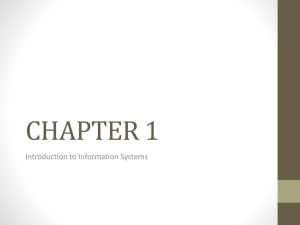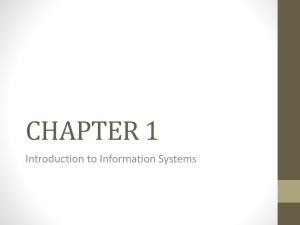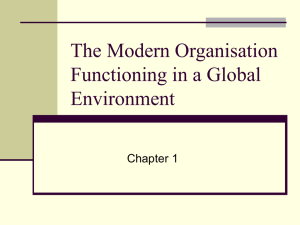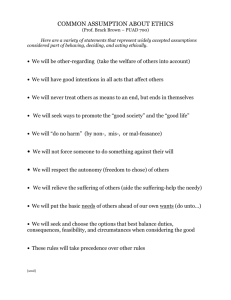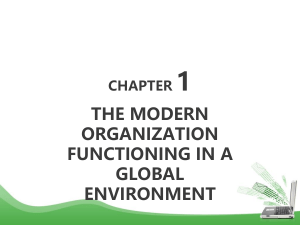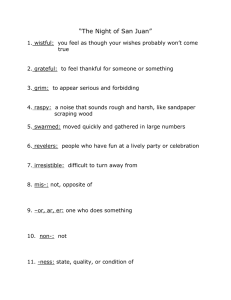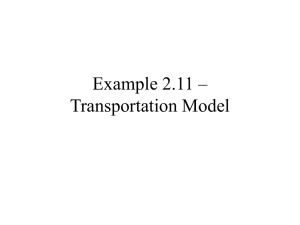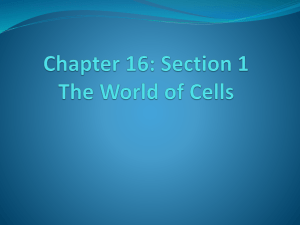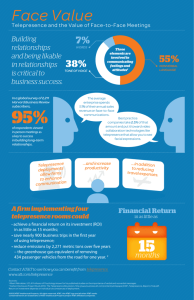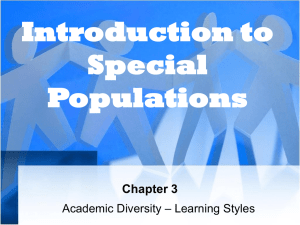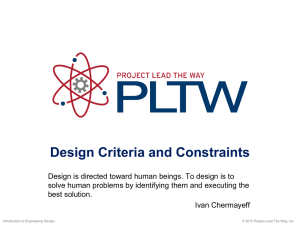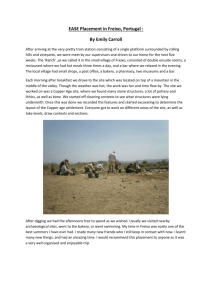Introduction to Information Systems
advertisement
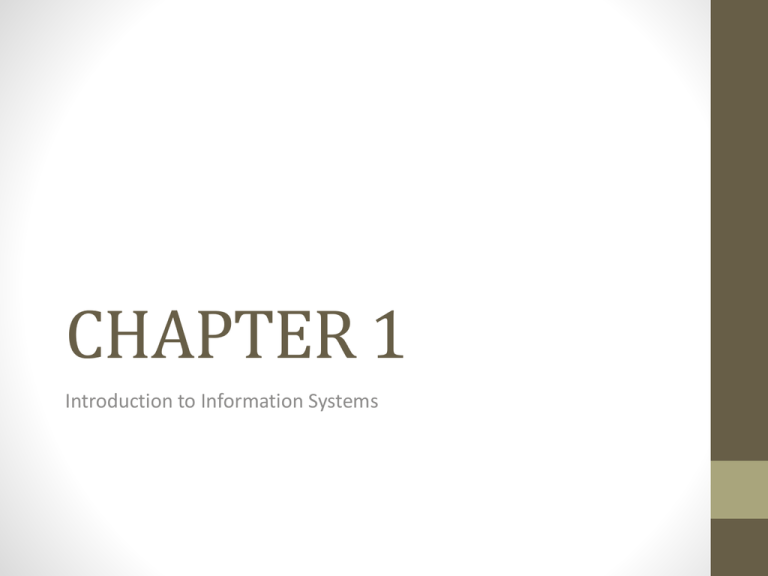
CHAPTER 1 Introduction to Information Systems CHAPTER OUTLINE 1.1 1.2 1.3 1.4 Why Should I Study Information Systems? Overview of Computer-Based Information Systems How Does IT Impact Organizations? Importance of Information Systems to Society Chapter Opening CaseJasmine Revolution The Power of the People is much stronger then People in Power! An example of the far-reaching effects of IT on individuals and organizations Information Technology IT is making our world smaller, enabling more and more people to communicate, collaborate and compete… We are…or it is… • • • • • • • Global Massively interconnected Intensely competitive 24/7/365 Real time Rapidly change Information intensive The Informed User – You! Homo Conexus You are the most connected generation in history. You practice continuous computing. You are surrounded by a personal, movable information network. © Voon Nam Fook/iStockphoto Build Your Own Multinational Company http://www.domystuff.com/ http://www.vworker.com/ http://www.webgrity.com/ http://www.b2kcorp.com/ http://www.globetask.com/ http://www.guru.com/ https://www.elance.com/ © Alex Gumerov/iStockphoto Digital Nomads Source: Media Bakery Capabilities of Information Systems • Store huge amounts of information in small space • Allow quick, inexpensive access to vast amounts of information worldwide • Interpret vast amounts of data quickly and efficiently • Increase effectiveness and efficiency of people working in groups in one place or around the world Capabilities of Information Systems • Perform high-speed, high-volume numerical computations • Automate semiautomatic business process and manual tasks • Provide fast, accurate communication and collaboration within and among organizations MIS- Management Information Systems The planning for and the development, management and use of information technology tools… MIS- Management Information Systems to help people perform all the tasks related to information processing and management. MIS Department • • • • • Incorporating Ecommerce into the business Managing system integration Internet, Intranet, Extranet Education Managing Outsourcing Source: Howard Kingsnorth/The Image Bank/Getty Images, Inc. 1.2 Overview of ComputerBased Information Systems © zu difeng/Shutterstock IT vs IS • Information Technology Any computer based tool that people use to work with information and to information processing needs of an organization. IT vs IS • Information Systems • Collects, processes, stores, analyzes and disseminates information of the specific purpose. • Get the • • • • • right information to the right people and the right time in the right amount in the right format transactions that are recorded, classified and stored but are not organized to convey any specific meaning Data Information meaning and value Knowledge accumulated learning and expertise as they apply to a current problem or activity. Basic Components of a CBIS Types of Information Systems Figure 1.4 Functional Area information systems Information Systems Inside an Organization Information Technology Services IT Platform IT Personnel or otherwise know as IT Components • develop IS systems • oversee security and risk • manage data • • • • Hardware Software Networks Database Functional Area Systems • A collection of application programs within an area is called Functional Area Systems • • • • • Accounting Finance POM- Production/ Operations/ Management Marketing Human Resources IS Accounting Systems • • • • Forecast revenues and business activity Determine the best sources and uses of funds Perform audits Financial reports and documents are accurate. Marketing • Product analysis: developing new goods and services • Site analysis: determining the best location for production and distribution facilities • Promotion analysis: identifying the best advertising channels • Price analysis: setting product prices to obtain the highest total revenues POM • • • • Customer orders Develop production schedules Control inventory levels Monitor product quality Human Resources • • • • • Recruiting process Analyze and screen job applicants Hire new employees Monitor empolyee productivity Employ Health and Retirement benefits Data- Information-KnowledgeWisdom • Business Intelligence -helps analyze information to make better informed decisions • Dashboards- provide rapid access to timely information Two Information Systems that support the entire organization • Enterprise Resource planning- connects all functional areas together • Transaction Processing system- captures data from every where and everything ( more about these in later chapter) Information Systems between Organizations • Once you figured out your information systems within the walls of your company • streamline your business so you can purchase supplies and sell goods • stay competitive Information Systems between Organizations Better known as supply chain management: suppliers of raw materials through factories and warehouses to YOU Flow of: materials information money Information Systems Among Organizations Social Effects • Positive • • • • Opportunities for people with disabilities Provide people with flexibility in their work Robots will take over mundane chores Enable improvement in healthcare Ergonomic Products Source: Media Bakery Enabling People with Disabilities to Work with Computers Computer solutions available to • Visually-impaired users • Hearing-impaired users • Motor-impaired users © Harry Huber/Age Fotostock America, Inc. Video Break • Telepresence (big bang clip) • Telepresence (in office ex clip)
